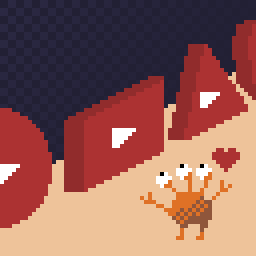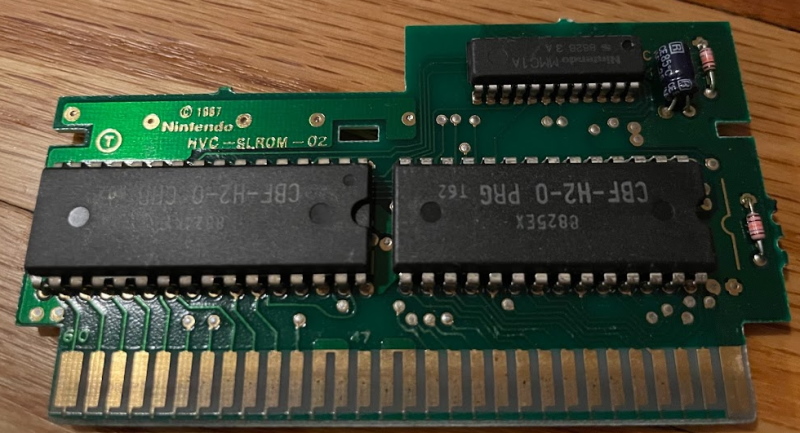Kimimi the Game-Eating She-Monster recently covered Moero Twinbee, known in the US as Stinger in one of Konami’s few attempts to establish their cute-em-up series in foreign territories. I think Twinbee is a terrific name for a game of this type, so it puzzles me why they insist on renaming it. In addition to “Stinger,” in Europe they retitled the arcade game Detana! Twinbee to Bells & Whistles, where the bells may fit but the whistles sure don’t.
(A warning if you play this one and are sensitive to flashing images, there is a violently flashing effect right before the bosses that won’t treat you very well, I’m afraid.)
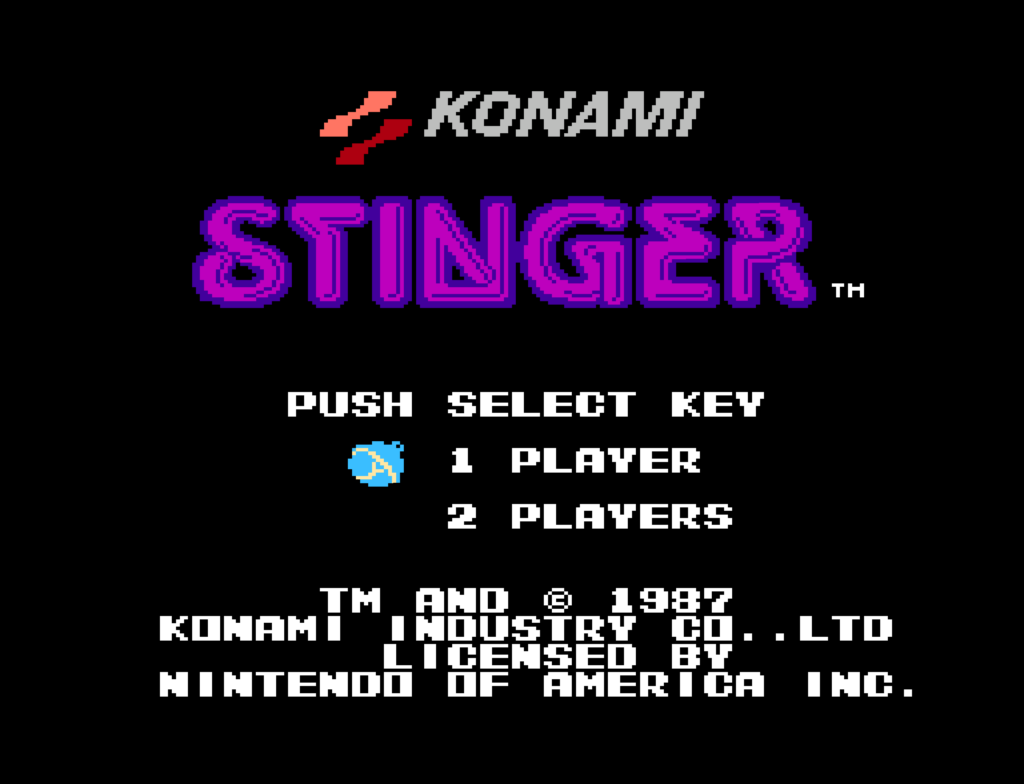
Her article is ostensibly the subject of this post, and I’ll try not to repeat points that she makes. Stinger holds a place in my heart, if not a prominent one then still one at all, after all it has blood to pump. It was the first NES game I ever beat! If memory holds correctly the second one was The Legend of Zelda, which is kind of fitting: Stinger is easier than it looks, so it builds confidence, while Zelda is harder. (It took me months, mostly from being stuck finding the entrance to Level 7 in the Second Quest.)
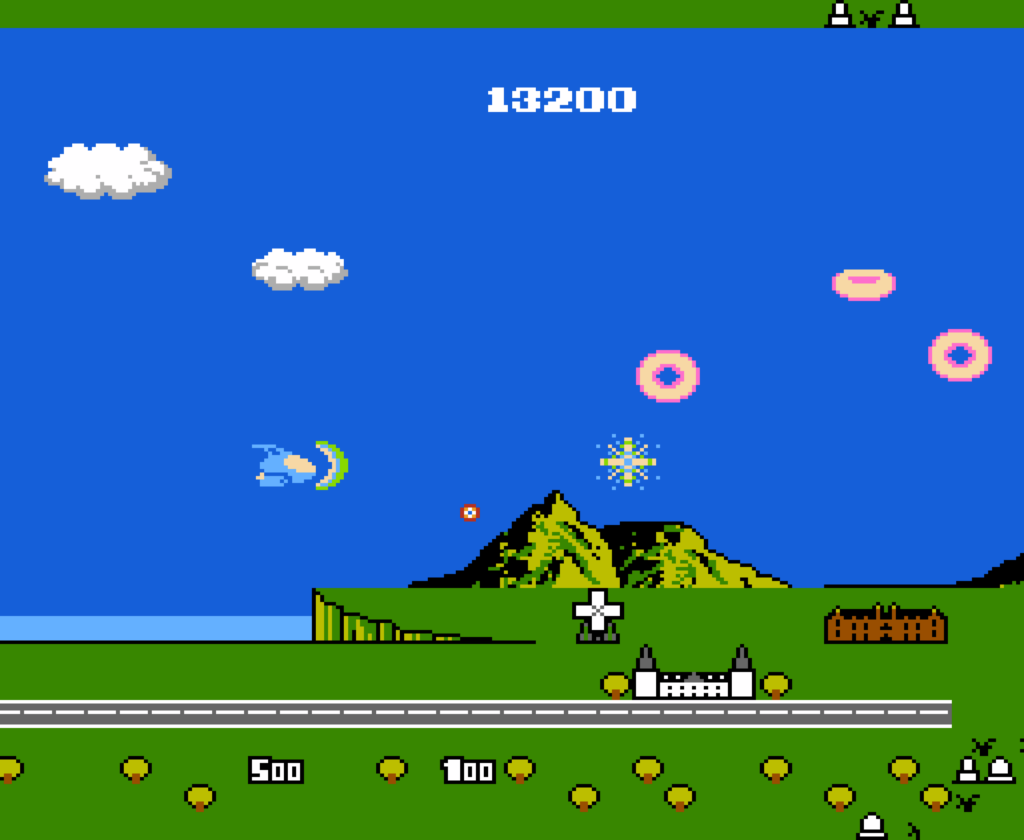
In Japan, Moero Twinbee was not only a Famicom Disk System game but one that supported up to three players (P3 used a controller plugged into the expansion port). The US ROM version only allows two players, which realistically probably makes for a better game anyway. Even with a single player, once you get the five-way shot powerup it’s easy to fill the screen with so many bullets that you don’t actually see many enemies.
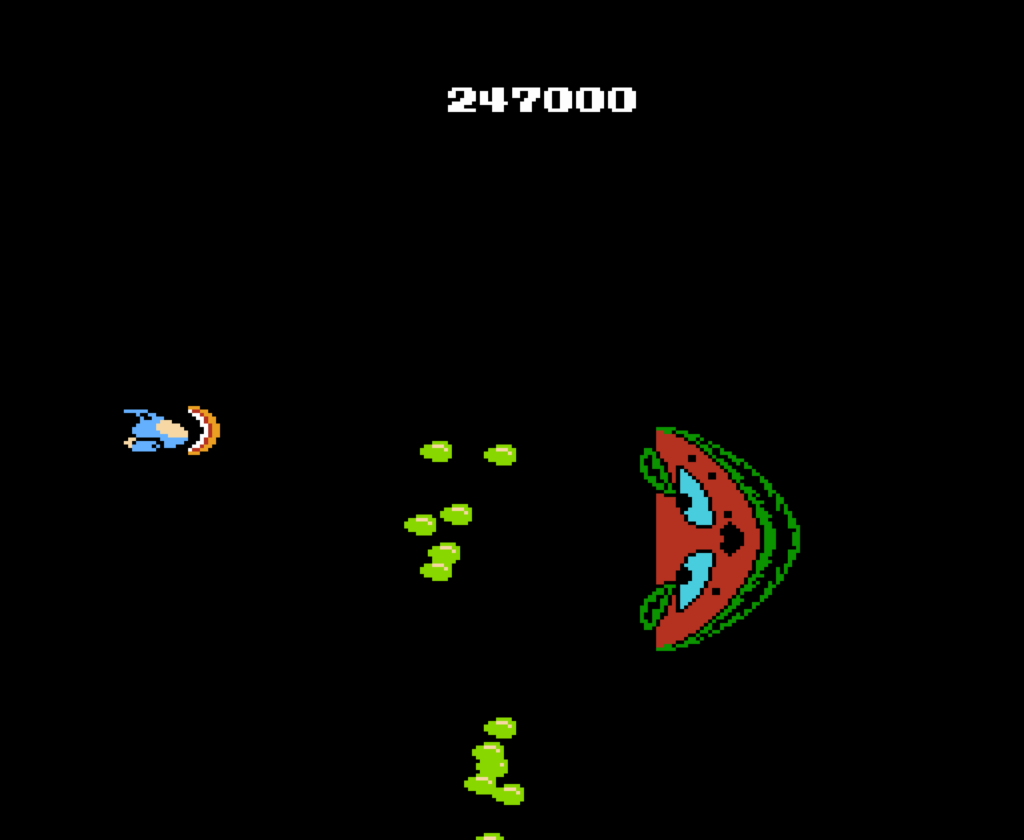
Kimimi recounts much of what makes Moero Twinbee/Stinger different both from other shoot-em-ups and from other Twinbee games: the bell powerup system that’s Twinbee’s trademark, and the side-scrolling stages that are unique in its series. The side-view levels are particularly interesting, not only because the game both begins and ends with one, but because it completely changes the gameplay in a couple of significant ways.
You see Twinbee is a variation upon the theme of Namco’s Xevious, complete with its bomb button to attack ground-based installations, and that depends on its overhead perspective. But Moero’s side-scrolling levels ditch it completely: in those, and only those, the Bees fire arcing bombs along with their main shots, with the same button, and it’s those that can hit ground targets at the bottom of the screen. The bomb button is repurposed to fire hearts, a different special weapon that only works on bells.
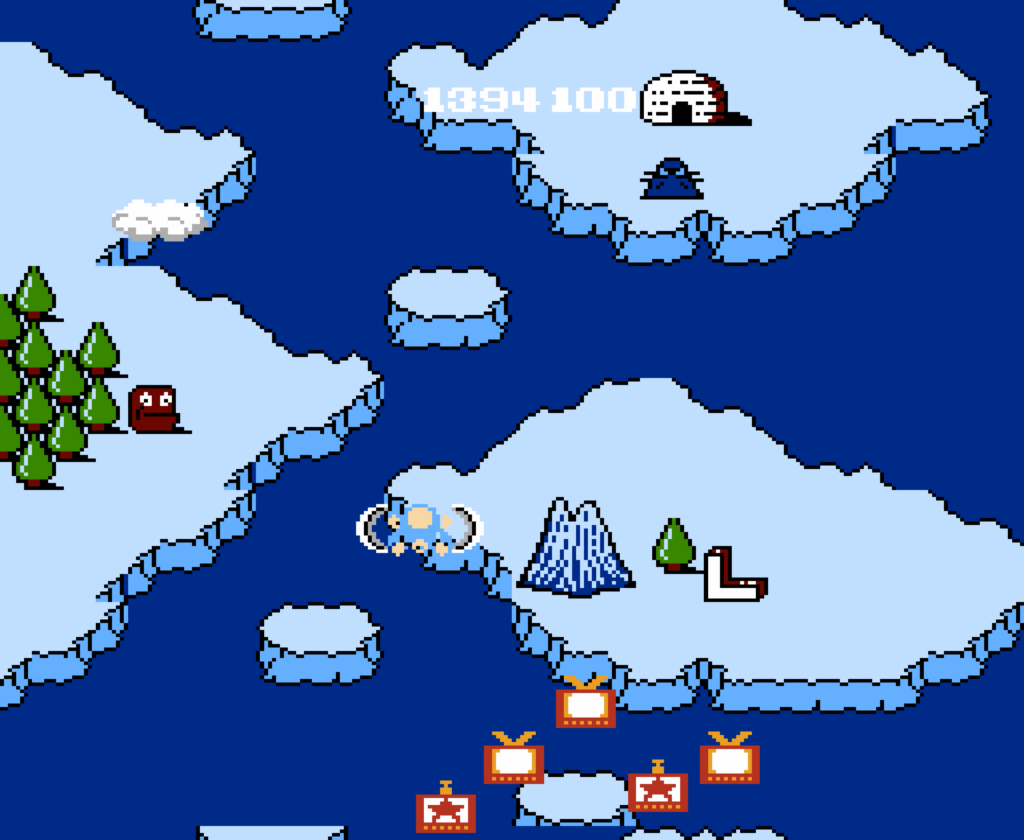
Oh those bells, them and all their tintinnabulations. If you’ve never played Twinbee, but have played one of the Cotton games, you already know how they work. Some targets (usually clouds in the Twinbee games) release colored powerup objects. They rapidly fall down towards the bottom of the screen, but they can be kept in play by shooting them, bouncing them up. As you shoot them, every few hits it changes color, and different colored bells award different powerups. I like powerup systems like this and the Gradius system, and consider them superior to the standard icon-based setup from Salamander and practically every other shmup. You get to decide which powerups you want, possibly to activate them just when you need them, but you still have to use skill and judgement to get the ones you need when you need them, whereas games with set powerup locations force you to choose between what you have and what you’re given.
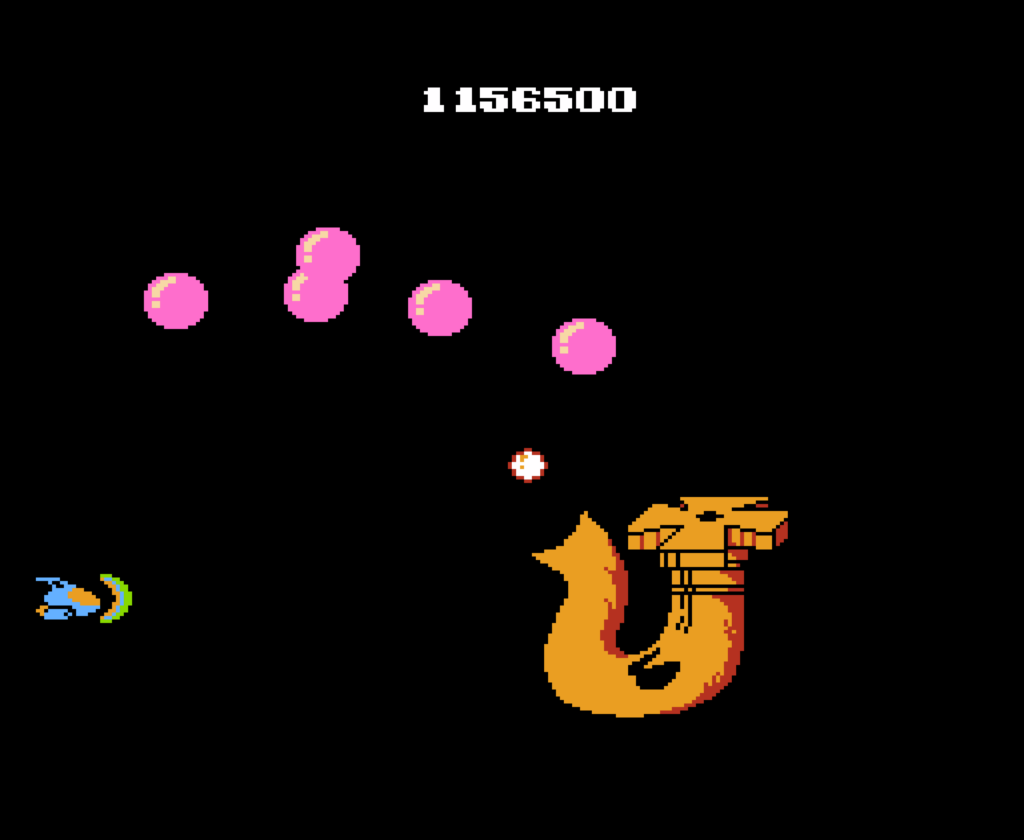
Hearts get fired from your ship upward in the side-view stages. It’s a lot harder to hit bells when they’re falling vertically past your horizontally-moving shots, instead of when both bells and bullets move vertically, and the hearts are meant to make up for that, but they’re so useless that it’s a much better strategy, in practice, to just get up close and pepper them with shots up close. The best powerup is the force field, which grants you several free hits (and doesn’t summon the wave of shield-weakening egg enemies from the first game), but it’s also the one that takes the most bell hits to earn. Another thing to aim for is just collecting the default yellow bells, which award no powerups, but every one you collect without letting a bell fall off-screen rapidly earns you more points, up to 10,000 points each after collecting just four yellow bell in a row. It only requires 100,000 points for an extra life, then additionals every 200,000, up to about 900,000 or so. 10,000 points per bell is such a huge bonus that, once you’re good with your powerup state, gigantic scores aren’t too hard to reach, and there’s three extra lives right in the first stage anyway.
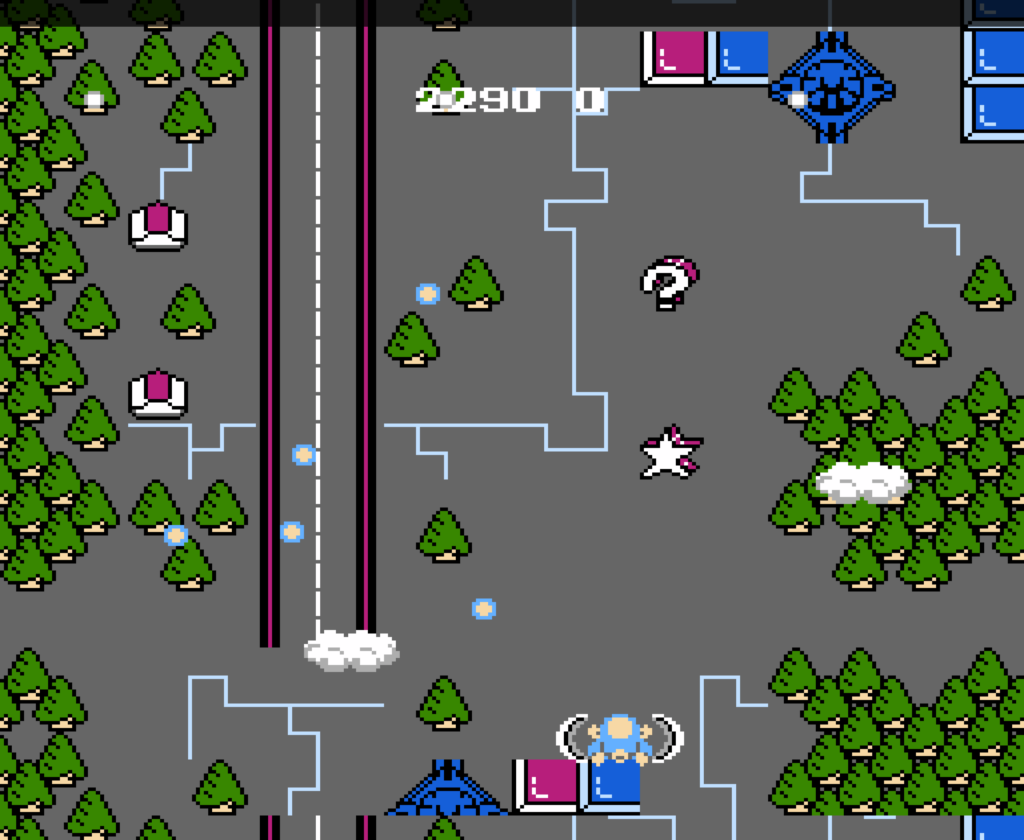
The Twinbee games have always had interesting bosses, which helps to distract from the fact that, up to Detana! (the fourth Twinbee game, and the second in the arcade) most of the other targets are just popcorn enemies. When you just get started playing Moero Twinbee, it’s not uncommon to rule through the game with 3- or 5-way shot, the best powerups you can get from the ground targets, then get demolished by a boss you don’t yet know how to beat and then, reduced to single shots, either have your game end right there, or barely get in the last few shots against the boss and then get inundated by the popcorn enemies in the next level.
The first bell powerup in the sequence, blue, is Speed-Up, and unlike Gradius where too much speed will kill you extra dead, it’s mostly beneficial in Stinger, because you can’t crash into the terrain and you’ll probably have a force field anyway. With at least 3-Way shot, a couple of Speedups and the force field, the only real danger is the harder bosses and your force field running out. The blue-white flashing force field bells don’t appear if you already have one, and you’ll probably run out in the middle of Stage 6, where the game finally rolls up its sleeves and gets to punching. If you can then somehow build up another blue-white bell (it takes exactly 25 hits on a bell to make one), you have a chance at finishing the game. Like many Konami games at the time, Stinger continues indefinitely, loop after loop, and it gets slightly harder each time.
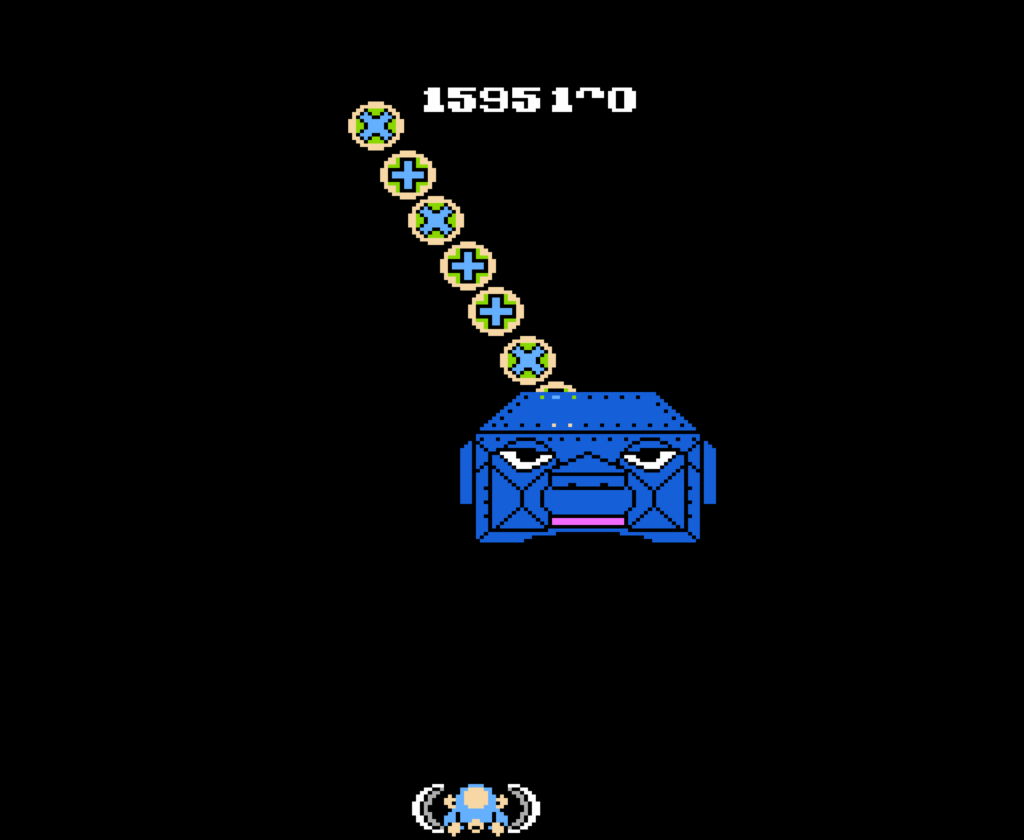
Konami made three Twinbee games for the NES; the first was a remake of the arcade original; this was the second; and the third, Poko Poko Daimaou, I think is inferior. They form a trilogy; then for the fourth game, Detana! Twinbee, it was rebooted, keeping the Bees’ creator Professor Cinnamon but bequeathing them to his grandnephew, grandson and granddaughter Light, Mint and Pastel, whose popularity would soon outstrip the originals, especially Pastel who became quite a phenomenon. Detana was followed up by Pop’n Twinbee and Rainbow Bell Adventures on Super Famicom, Twinbee Yahho in arcades, and a handful of anime OAVs.

Kimimi on Moero Twinbee – Hardcore Gaming 101 on Moero Twinbee and Stinger

